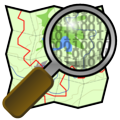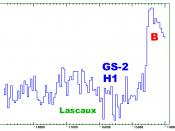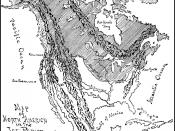Between the years 1300 and 1850 our planet experienced what is now known as the little ice age. The little ice age is a period of abnormally low temperatures that no one knows the true cause of. With the negative events such as food shortages came positive events such as discoveries of new land and discovery of broader ranges of food. Scientists can even look at the little ice age for a basis of today's theory of global warming and can compare sample of pollution trapped in ice to today's readings.
No one is certain why the little ice age happened. One possibility is there were small changes in the earth's axis which caused it to become colder for centuries. Another is cyclical fluctuations in solar radiation leading to the earths cooling. "Slow, cyclical changes in the eccentricity of the earth's orbit and in the tilt and orientation of its spin axis have constantly changed patterns of evaporation and rainfall and the intensity of the passing seasons over the past 730,000 years.
As a result, the world has shifted constantly between extreme cold and short warmer periods." (Fagan 55)
A good thing that came of the little ice age is it was possible to explore Iceland and Greenland much easier. The Norse discovered North America by traveling down the Davis straight during a warm summer. Lief Eirikson was able to discover modern-day Labrador using normally icy roots that were made passable by the unusual warmth. These discoveries changed the world forever. The onslaught of cold weather made crops fail. This made fishing the best source of food during that time. They pursued whales and cod in the Atlantic off the coast of North America, Greenland, and Iceland. (Fagan 65)
This could not last long. During the 14th century ice conditions...


